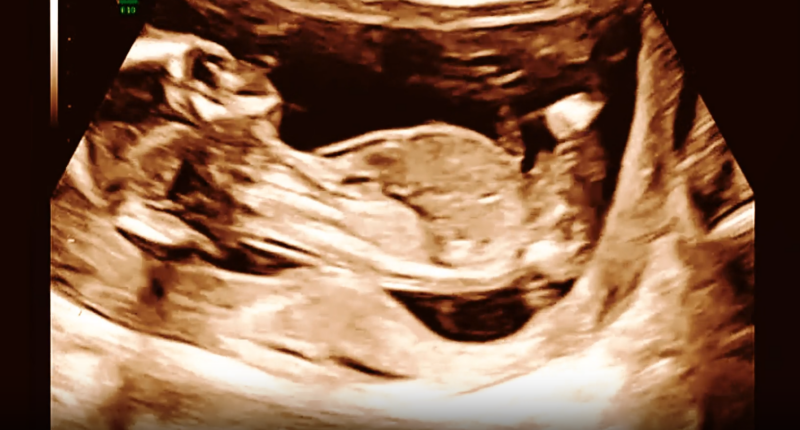Abdominal pregnancy is a unique and relatively rare medical condition that requires both understanding and sensitivity. It’s a scenario where the journey of pregnancy takes an unexpected turn, with the embryo implanting outside the nurturing environment of the uterus, often in the abdominal cavity.
While this situation is indeed serious and necessitates immediate medical attention, it’s important for expecting mothers and their families to remember that with today’s advances in healthcare, many women successfully navigate through this challenge.
Here we aim to provide you with a comprehensive and compassionate guide to the signs and symptoms of abdominal pregnancy. Our goal is to inform and reassure you.
While abdominal pregnancy is a deviation from the norm, with the right medical care and support, the risks can be managed effectively. Knowledge, vigilance, and timely medical intervention are key. Let’s embark on this journey of understanding together, exploring the nuances of abdominal pregnancy and its implications with a sense of hope and empowerment.
Vague Early Symptoms

In the initial stages, symptoms of an abdominal pregnancy can be deceptively similar to those of a normal pregnancy, like missed periods, nausea, and breast tenderness. This similarity often leads to a delay in diagnosis. However, as the pregnancy progresses, more distinct symptoms arise, which are crucial for identification.
| Symptom | Description | Comparison to Normal Pregnancy |
|---|---|---|
| Missed Periods | Absence of menstrual bleeding, typically the first sign of pregnancy. | Common in both normal and abdominal pregnancies. |
| Nausea | Feelings of queasiness, often accompanied by vomiting, particularly in the morning. | A frequent early symptom in both types of pregnancies. |
| Breast Tenderness | Swollen, tender, or sore breasts, often noticed shortly after the missed period. | Also common in normal pregnancies, especially in the early stages. |
| Abdominal Discomfort | Mild to moderate discomfort in the abdominal area, not specific to abdominal pregnancy. | Can occur in normal pregnancies but often less pronounced. |
| Fatigue | A sense of tiredness or exhaustion that is not alleviated by rest. | Very common in early stages of all pregnancies. |
| Light Spotting | Occasional light bleeding or spotting, different from a normal period. | Can occur in both, but more closely monitored in abdominal pregnancy. |
Abdominal Pain and Discomfort

One of the most common symptoms is persistent or intermittent abdominal pain, often described as sharp or stabbing. This pain, differing from the usual discomforts of pregnancy, can intensify with the growth of the embryo. The localization of the pain varies depending on where the embryo has implanted in the abdominal cavity.
Vaginal Bleeding
Vaginal bleeding, which may range from light spotting to heavy bleeding, is another symptom that can raise suspicion of an abdominal pregnancy. This bleeding is typically irregular and not associated with the usual menstrual cycle. It can be a sign of the body reacting to the abnormal implantation.
Gastrointestinal Symptoms
As the embryo grows in the abdominal cavity, it can exert pressure on the intestines and other organs, leading to gastrointestinal issues like constipation, bloating, and in some cases, difficulty in bowel movements. These symptoms are often mistaken for common digestive disorders.
Palpable Mass in the Abdomen

In some instances, a palpable mass can be felt in the abdomen. This mass, formed by the growing embryo, is distinct from the usual uterine enlargement seen in a typical pregnancy. It may be accompanied by a sensation of fullness or pressure in the abdomen.
Abnormal Fetal Movements
Women experiencing an abdominal pregnancy might notice unusual fetal movements. Unlike the movements felt in a uterine pregnancy, these can feel sharper, more localized, and sometimes even painful. This is due to the lack of cushioning and protection provided by the uterine walls.
| Type of Movement | Abdominal Pregnancy Characteristics | Uterine Pregnancy Characteristics |
|---|---|---|
| Location | Movements are more localized in specific areas of the abdomen. | Movements are distributed throughout the uterus. |
| Intensity | Movements can be sharper and more intense. | Movements are generally softer and more diffused. |
| Sensation | Movements may cause discomfort or even pain. | Movements are usually not painful, often described as fluttering or kicking. |
| Frequency | May experience irregular or less frequent movements. | Movements become more regular and frequent as pregnancy progresses. |
| Response to External Stimuli | Less predictable response to touch, sound, or other stimuli. | Fetus often responds predictably to touch, voices, or sounds. |
| Protective Cushioning | Lack of uterine cushioning can make movements feel more direct. | Uterine walls provide cushioning, softening the feel of movements |
Diagnostic Challenges
It’s important to highlight the diagnostic challenges posed by abdominal pregnancies. Standard pregnancy tests and initial ultrasounds may not immediately detect the abnormality, leading to misdiagnosis. Advanced imaging techniques like MRI or detailed ultrasounds are often required for accurate diagnosis.
Risks and Complications
The risks associated with an undiagnosed or late-diagnosed abdominal pregnancy are substantial. They include internal bleeding, organ damage, and complications during childbirth. The health of the fetus is also at significant risk, as the environment outside the uterus is not conducive to normal development.
FAQs
Can abdominal pregnancy be detected through a regular ultrasound?
Abdominal pregnancy can be challenging to detect with a standard ultrasound, especially in the early stages. While ultrasound is a primary diagnostic tool, abdominal pregnancies might require more detailed imaging techniques such as a transvaginal ultrasound or MRI for accurate detection. These methods can provide a clearer view of where the embryo has implanted.
What are the treatment options for abdominal pregnancy?
Treatment for abdominal pregnancy typically involves surgery to remove the embryo from the abdominal cavity. The approach depends on the location of the embryo and the stage of pregnancy. In very rare cases where the pregnancy is advanced and the fetus is viable, a carefully planned delivery may be considered. However, this is extremely rare and carries significant risks.
Is it possible to have a successful pregnancy after experiencing an abdominal pregnancy?
Yes, it is possible to have a successful pregnancy after an abdominal pregnancy. However, it is crucial to wait for the recommended period of healing and to work closely with healthcare providers to monitor any potential risks. Individual factors such as the cause of the abdominal pregnancy and overall health will play a role in future pregnancy planning.
Are there any long-term health effects on the mother after an abdominal pregnancy?
The long-term health effects depend on various factors, including the extent of the condition and the treatment approach. Some women may experience adhesions or scar tissue formation in the abdominal cavity. Regular follow-up and monitoring are important to address any potential health issues arising from the condition or its treatment.
Can lifestyle changes reduce the risk of abdominal pregnancy?
While lifestyle changes cannot eliminate the risk of an abdominal pregnancy, maintaining a healthy lifestyle can improve overall reproductive health. This includes managing chronic conditions, avoiding smoking and excessive alcohol consumption, and maintaining a healthy weight. However, it’s important to note that many cases of abdominal pregnancy are due to factors beyond individual control.
How is abdominal pregnancy different from a tubal pregnancy?
Abdominal pregnancy and tubal (ectopic) pregnancy are both types of ectopic pregnancies, but they occur in different locations. A tubal pregnancy happens when the embryo implants in the fallopian tubes, while an abdominal pregnancy occurs when the embryo implants in the abdominal cavity. The treatment and risks associated with these conditions can vary significantly due to their different locations.
Final Words
In conclusion, abdominal pregnancy, though a rare and complex medical scenario, is a condition that can be managed with the right combination of medical expertise and patient awareness.
Throughout this article, we’ve explored the various symptoms and implications of abdominal pregnancy, aiming to provide a comprehensive understanding of this unique condition. It’s important to remember that while abdominal pregnancy presents its own set of challenges, modern medicine offers effective ways to address them, ensuring the safety and well-being of both mother and child.
Knowledge and awareness are powerful tools in navigating the complexities of abdominal pregnancy. Recognizing the symptoms early and seeking prompt medical attention are vital steps in ensuring the best possible outcomes.
As we’ve seen, the human body is incredibly complex, and pregnancy can sometimes follow an unexpected path. However, with the advancements in medical science and the dedication of healthcare professionals, women facing this condition can still look forward to a positive journey through pregnancy.







